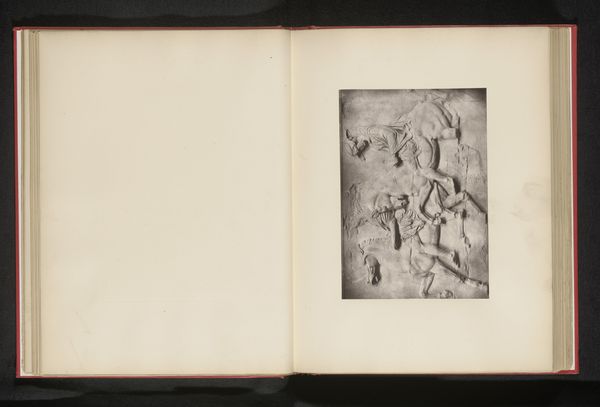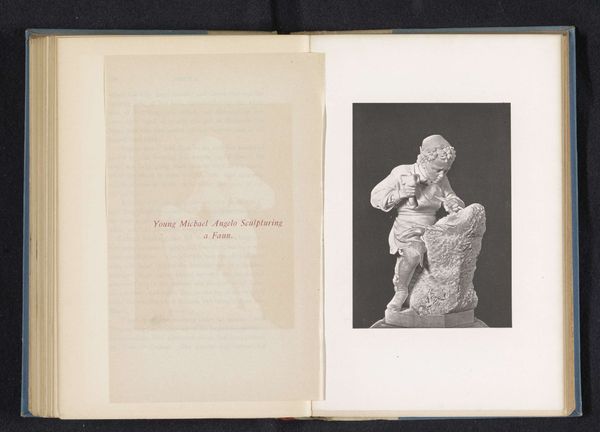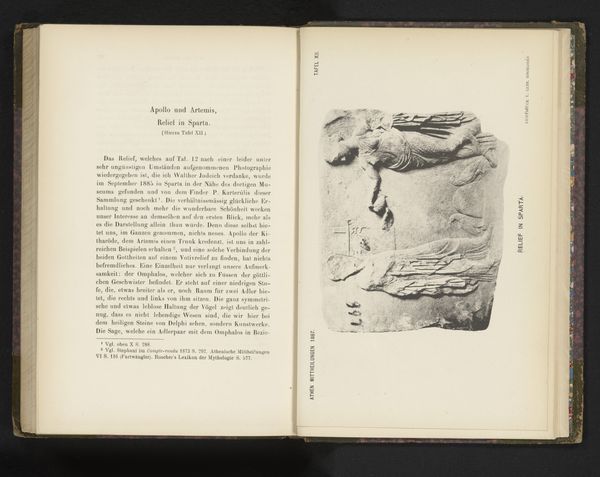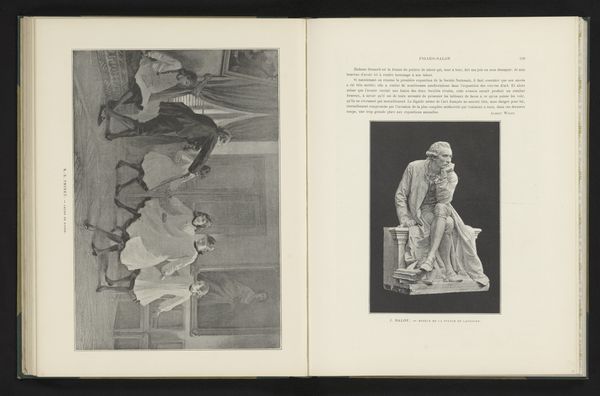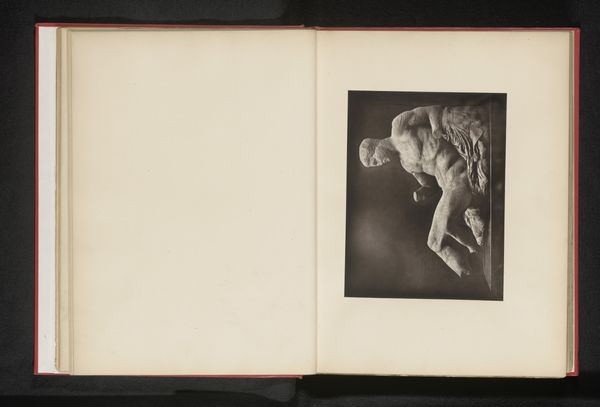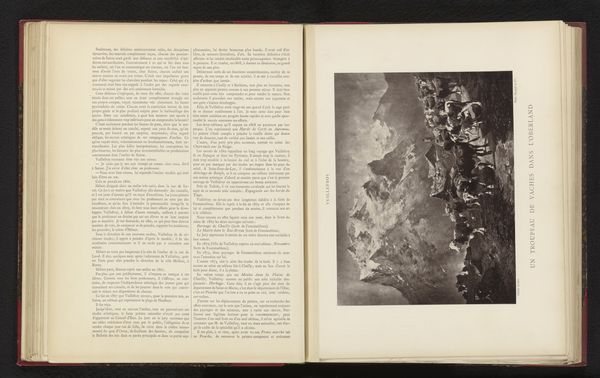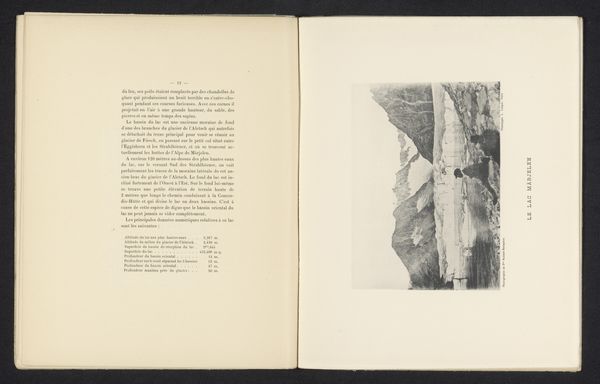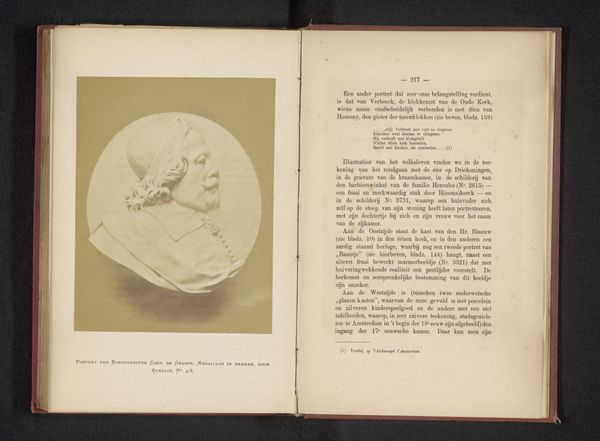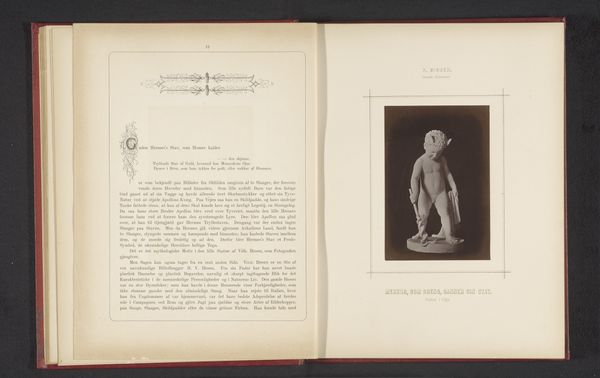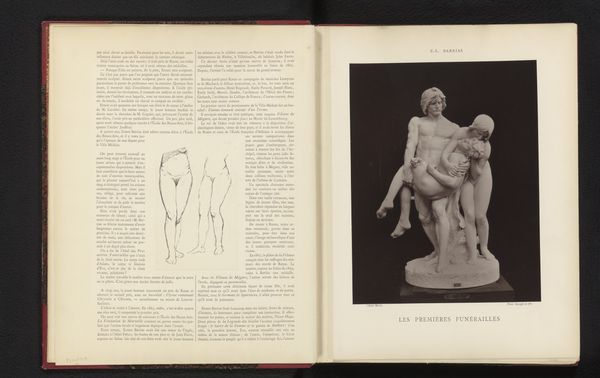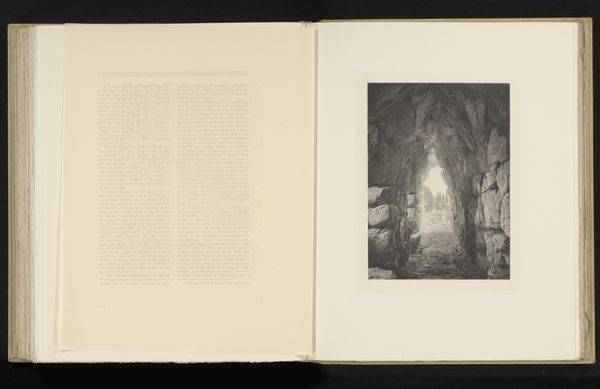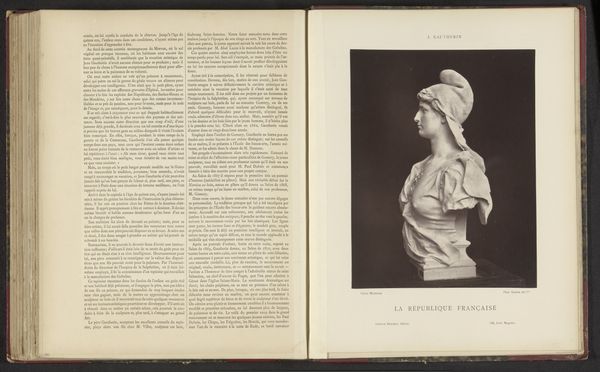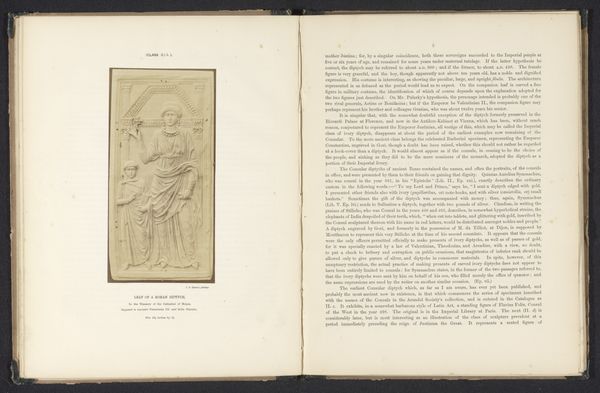
#
script typeface
#
aged paper
#
personal journal design
#
personal sketchbook
#
hand-drawn typeface
#
thick font
#
publication mockup
#
golden font
#
historical font
#
publication design
Dimensions: height 183 mm, width 255 mm
Copyright: Rijks Museum: Open Domain
Editor: So, here we have an image from before 1884 showing Antoine Étex's sculpture, "Tombeau de Géricault." It's a photograph of the sculpture presented within the pages of a publication. The sculpture itself appears so solid and still. I am interested in how these homages work within the context of art history. How is Géricault being positioned here through Étex's work, and then, again, through its photographic presentation? Curator: That's a great way to begin thinking about it. Beyond simply commemorating Géricault, we should consider what the act of memorializing artists says about how society values artistic genius and originality at the time. Think about where such a monument would be placed, the debates surrounding its commission, and the social and political climate surrounding its creation. Do those influence our reception? Editor: Absolutely. Was there something politically charged about Géricault himself? Was there some reason to build him into a particular ideal? Curator: Géricault was indeed considered a somewhat rebellious figure. Remember "The Raft of the Medusa," a direct critique of government failings, caused quite a stir. By commissioning a tomb, were they then attempting to perhaps integrate his radical energy into the more palatable realm of national artistic pride? How would the sculptural elements play into these intentions? Editor: That’s such a great point. The sculpture features Géricault, holding a palette, leaning pensively on what looks like the raft itself. Almost as if reflecting on disaster or failure... which sort of echoes through his legacy. And what does the choice to memorialize him visually *in print* add to our understanding? Curator: Presenting it in printed form made the memorial accessible to a wider audience than just visitors to the physical site, thereby democratizing his legacy. Think of the context of expanding print culture and how the reproduction reinforces ideas about art and the artist’s identity in society. This adds layers of interpretation concerning the public role of art. Editor: That definitely offers a lot to consider... thank you! Curator: Of course! It is so interesting to consider the impact and dialogue pieces like this create.
Comments
No comments
Be the first to comment and join the conversation on the ultimate creative platform.
